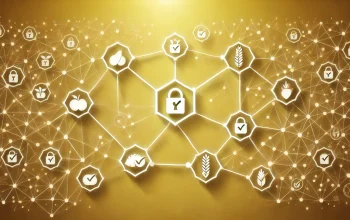Facebook The Ultimate Guide to Protecting Your Account from Hackers

The Ultimate Guide to Protecting Your Facebook Account from Hackers
In today’s digital world, your Facebook account is more than just a social media profile—it’s a gateway to your personal and professional life. From connecting with loved ones to managing business pages, Facebook plays a significant role in our daily activities. This also makes it a prime target for hackers. If your account is compromised, it could lead to severe consequences, including identity theft, financial loss, and reputational damage. Protecting your Facebook account should be a top priority. Here’s a comprehensive guide with essential tips to safeguard your account from hackers.
Table of Contents
1. Strengthen Your Password
The first line of defense for your Facebook account is a strong password. Many people still use simple, easily guessable passwords like “123456” or “password,” which makes hacking into their accounts much easier. Here’s how to create a robust password:
- Use a Mix of Characters: Include upper and lowercase letters, numbers, and symbols in your password.
- Avoid Common Words or Phrases: Don’t use easily guessable information such as your name, birthday, or common words.
- Create a Long Password: Aim for a password that is at least 12 characters long.
- Use Unique Passwords for Different Accounts: Never reuse the same password across multiple sites.
Regularly update your password to ensure continued security. If you find it challenging to remember complex passwords, consider using a password manager to keep track of them securely.
2. Enable Two-Factor Authentication (2FA)
Two-Factor Authentication (2FA) adds an extra layer of security to your Facebook account. With 2FA enabled, even if someone manages to steal your password, they still won’t be able to access your account without the second form of verification, usually a code sent to your mobile device. Here’s how to set it up:
- Go to Settings & Privacy > Security and Login on your Facebook account.
- Find the Two-Factor Authentication section and click Edit.
- Choose your preferred security method (text message, authentication app, or security key) and follow the prompts to complete the setup.
This additional step might seem inconvenient, but it’s one of the most effective ways to protect your account from unauthorized access.
3. Review and Manage Account Permissions
Many users unknowingly grant access to their Facebook account through third-party apps and websites. While some of these apps are harmless, others can be potential security risks. Regularly review the apps and websites connected to your Facebook account:
- Go to Settings & Privacy > Settings > Apps and Websites.
- Here, you’ll see a list of active, expired, and removed apps connected to your account.
- Remove any apps or websites that you no longer use or don’t recognize.
Grant permissions only to trusted apps and limit the amount of personal information they can access.
4. Monitor Account Activity and Recognized Devices
Facebook allows you to monitor the devices currently logged into your account. This feature helps you spot any suspicious activity early on:
- Go to Settings & Privacy > Security and Login.
- Under Where You’re Logged In, you’ll see a list of devices currently logged into your account, including their locations.
- Review the list and log out of any devices you don’t recognize or no longer use.
By regularly checking this list, you can quickly detect unauthorized access and take action to secure your account.
5. Be Wary of Phishing Scams
Phishing scams are one of the most common methods hackers use to steal login credentials. These scams often come in the form of fake emails or messages that appear to be from Facebook, asking you to click on a link and enter your login information. To protect yourself from phishing:
- Double-Check the Sender’s Information: Before clicking on any links, verify that the email or message is from an official Facebook source.
- Look for Signs of Phishing: Be cautious of emails that contain spelling errors, generic greetings like “Dear User,” or urgent requests for you to act immediately.
- Do Not Enter Your Password on Unfamiliar Sites: Always log in directly through Facebook’s official website or app, not through a link in an email.
If you receive a suspicious email, do not click on any links. Instead, report it to Facebook and delete it.
6. Secure Your Email Account
Your email account is often the key to your Facebook account. If a hacker gains access to your email, they can reset your Facebook password and take control of your account. To protect your email:
- Use a Strong, Unique Password: Follow the same guidelines for creating a strong password as mentioned above.
- Enable Two-Factor Authentication: Just like with your Facebook account, enable 2FA on your email account for added security.
- Monitor Account Activity: Regularly check your email account’s activity to ensure no unauthorized access.
By securing your email account, you add an extra layer of protection to your Facebook account.
7. Limit the Information You Share Publicly
Hackers often gather information from your public profile to guess your password or answer security questions. Be mindful of the personal information you share on your Facebook profile:
- Adjust Your Privacy Settings: Go to Settings & Privacy > Privacy Checkup to review and adjust who can see your posts, personal information, and friend list.
- Be Cautious with Friend Requests: Only accept friend requests from people you know. Hackers often create fake profiles to connect with you and gather information.
- Limit What You Share in Public Posts: Avoid sharing sensitive information such as your phone number, address, or travel plans in public posts.
By controlling who can see your information, you reduce the risk of hackers exploiting it.
8. Set Up Login Alerts
Facebook can notify you whenever a new device logs into your account. These alerts can help you catch unauthorized access early:
- Go to Settings & Privacy > Security and Login.
- Under Setting Up Extra Security, find Get alerts about unrecognized logins and click Edit.
- Choose to receive alerts via Facebook notifications, email, or both.
If you receive a login alert that you don’t recognize, immediately secure your account by changing your password and logging out of all devices.
9. Regularly Update Your Software
Outdated software can have security vulnerabilities that hackers exploit. Ensure that your devices, browsers, and apps are regularly updated:
- Keep Your Operating System Up to Date: Regular updates often include security patches that protect against known threats.
- Use the Latest Version of the Facebook App: Update the Facebook app on your mobile devices to ensure you’re using the most secure version.
- Install Security Updates for Your Browser: Browsers are another common target for hackers, so keep them updated with the latest security patches.
By keeping your software current, you close potential entry points for hackers.
10. Report Suspicious Activity Immediately
If you notice any unusual activity on your Facebook account—such as posts you didn’t make or messages you didn’t send—take immediate action:
- Change Your Password: Immediately update your password to lock out any unauthorized users.
- Check Your Account Activity: Review your account’s activity and remove any unfamiliar devices.
- Report the Incident to Facebook: Use Facebook’s reporting tools to inform them of the suspicious activity.
The quicker you respond, the less damage a hacker can do to your account.
Conclusion
Protecting your Facebook account from hackers requires a proactive approach. By following these tips, you can significantly reduce the risk of your account being compromised. Remember, your online security is in your hands. Take the necessary steps today to safeguard your Facebook account and keep your personal and professional life secure.


